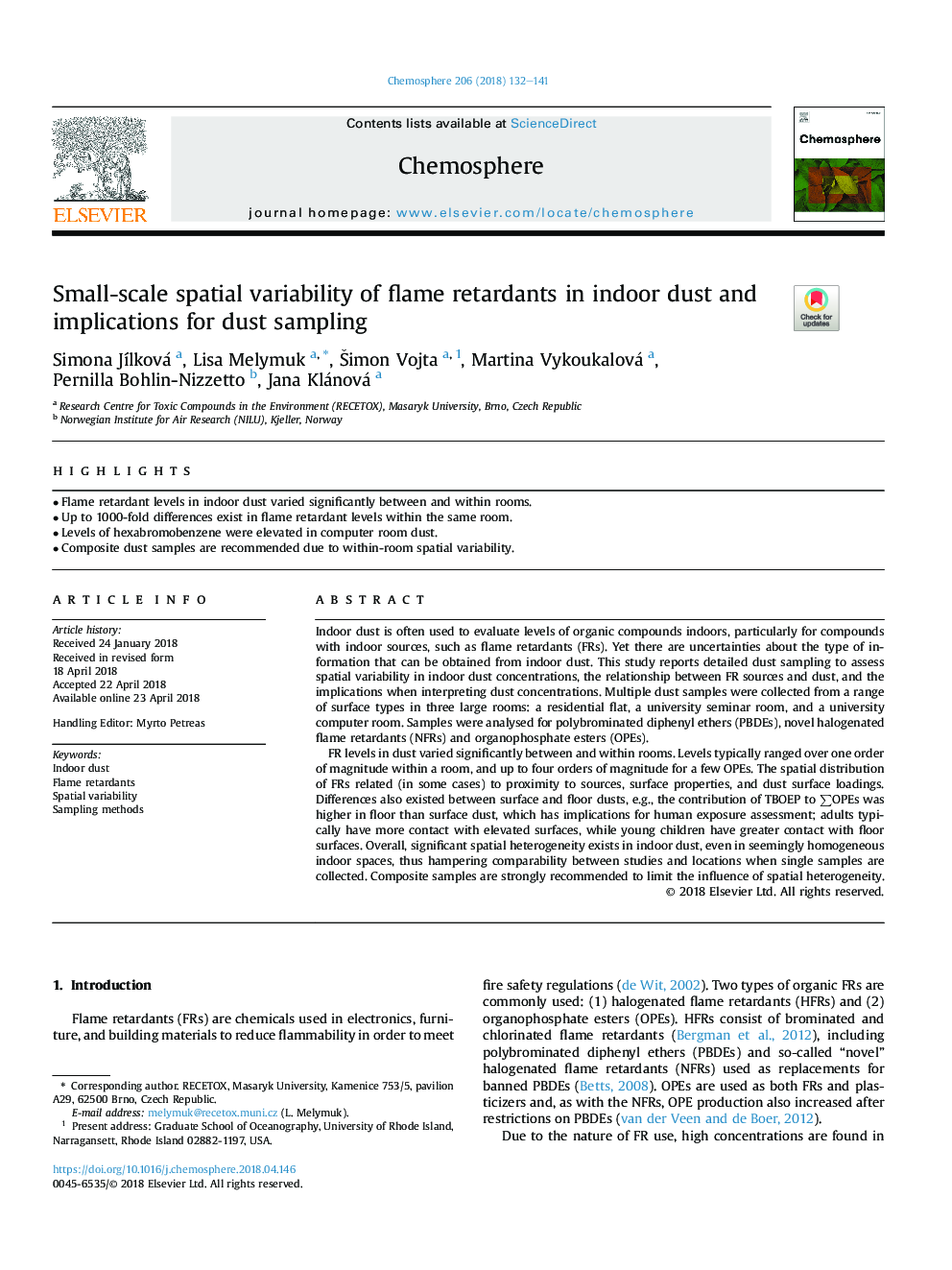| Article ID | Journal | Published Year | Pages | File Type |
|---|---|---|---|---|
| 8850844 | Chemosphere | 2018 | 10 Pages |
Abstract
FR levels in dust varied significantly between and within rooms. Levels typically ranged over one order of magnitude within a room, and up to four orders of magnitude for a few OPEs. The spatial distribution of FRs related (in some cases) to proximity to sources, surface properties, and dust surface loadings. Differences also existed between surface and floor dusts, e.g., the contribution of TBOEP to âOPEs was higher in floor than surface dust, which has implications for human exposure assessment; adults typically have more contact with elevated surfaces, while young children have greater contact with floor surfaces. Overall, significant spatial heterogeneity exists in indoor dust, even in seemingly homogeneous indoor spaces, thus hampering comparability between studies and locations when single samples are collected. Composite samples are strongly recommended to limit the influence of spatial heterogeneity.
Related Topics
Life Sciences
Environmental Science
Environmental Chemistry
Authors
Simona JÃlková, Lisa Melymuk, Å imon Vojta, Martina Vykoukalová, Pernilla Bohlin-Nizzetto, Jana Klánová,
